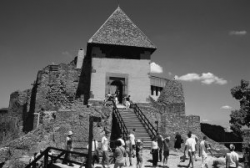This is the archival site of the former V4 portal. As of July 2024, it is no longer updated.
Visit visegrad.group for the current website.
Visit visegrad.group for the current website.

Fri 26 December 2025
Warszawa (PL)
4/2°C
| Tue | Wed | Thu | Fri | Sat |
|---|---|---|---|---|
| 1 | 3 | 5 | 6 | 8 |
Fri 26 December 2025
Praha (CZ)
6/2°C
| Tue | Wed | Thu | Fri | Sat |
|---|---|---|---|---|
| 6 | 5 | 8 | 8 | 9 |
Fri 26 December 2025
Bratislava (SK)
6/-1°C
| Tue | Wed | Thu | Fri | Sat |
|---|---|---|---|---|
| 8 | 6 | 7 | 8 | 8 |
Fri 26 December 2025
Budapest (HU)
5/-2°C
| Tue | Wed | Thu | Fri | Sat |
|---|---|---|---|---|
| 6 | 6 | 6 | 9 | 8 |
About the Visegrad Group
The Visegrad Group (also known as the "Visegrad Four" or simply "V4") reflects the efforts of the countries of the Central European region to work together in a number of fields of common interest within the all-European integration. Czechia, Hungary, Poland and Slovakia have always been part of a single civilization sharing cultural and intellectual values and common roots in diverse religious traditions, which they wish to preserve and further strengthen.
All the V4 countries aspired to become members of the European Union, perceiving their integration in the EU as another step forward in the process of overcoming artificial dividing lines in Europe through mutual support. They reached this aim in 2004 (1st May) when they all became members of the EU.
 The V4 was not created as an alternative to the all-European integration efforts, nor does it try to compete with the existing functional Central European structures. Its activities are in no way aimed at isolation or the weakening of ties with the other countries. On the contrary the Group aims at encouraging optimum cooperation with all countries, in particular its neighbours, its ultimate interest being the democratic development in all parts of Europe.
The V4 was not created as an alternative to the all-European integration efforts, nor does it try to compete with the existing functional Central European structures. Its activities are in no way aimed at isolation or the weakening of ties with the other countries. On the contrary the Group aims at encouraging optimum cooperation with all countries, in particular its neighbours, its ultimate interest being the democratic development in all parts of Europe.
The Visegrad Group wishes to contribute towards building the European security architecture based on effective, functionally complementary and mutually reinforcing cooperation and coordination within existing European and transatlantic institutions.
In order to preserve and promote cultural cohesion, cooperation within the Visegrad Group will enhance the imparting of values in the field of culture, education, science and exchange of information.
All the activities of the Visegrad Group are aimed at strengthening stability in the Central European region. The participating countries perceive their cooperation as a challenge and its success as the best proof of their ability to integrate also into such structures, such as the European Union.
More information:
All the V4 countries aspired to become members of the European Union, perceiving their integration in the EU as another step forward in the process of overcoming artificial dividing lines in Europe through mutual support. They reached this aim in 2004 (1st May) when they all became members of the EU.
 The V4 was not created as an alternative to the all-European integration efforts, nor does it try to compete with the existing functional Central European structures. Its activities are in no way aimed at isolation or the weakening of ties with the other countries. On the contrary the Group aims at encouraging optimum cooperation with all countries, in particular its neighbours, its ultimate interest being the democratic development in all parts of Europe.
The V4 was not created as an alternative to the all-European integration efforts, nor does it try to compete with the existing functional Central European structures. Its activities are in no way aimed at isolation or the weakening of ties with the other countries. On the contrary the Group aims at encouraging optimum cooperation with all countries, in particular its neighbours, its ultimate interest being the democratic development in all parts of Europe.The Visegrad Group wishes to contribute towards building the European security architecture based on effective, functionally complementary and mutually reinforcing cooperation and coordination within existing European and transatlantic institutions.
In order to preserve and promote cultural cohesion, cooperation within the Visegrad Group will enhance the imparting of values in the field of culture, education, science and exchange of information.
All the activities of the Visegrad Group are aimed at strengthening stability in the Central European region. The participating countries perceive their cooperation as a challenge and its success as the best proof of their ability to integrate also into such structures, such as the European Union.
More information:
V4 Cooperation
Presidency Programs
Visegrad Declarations
International Visegrad Fund
About this website:
Editorial Board
Presidency Programs
Visegrad Declarations
International Visegrad Fund
About this website:
Editorial Board







